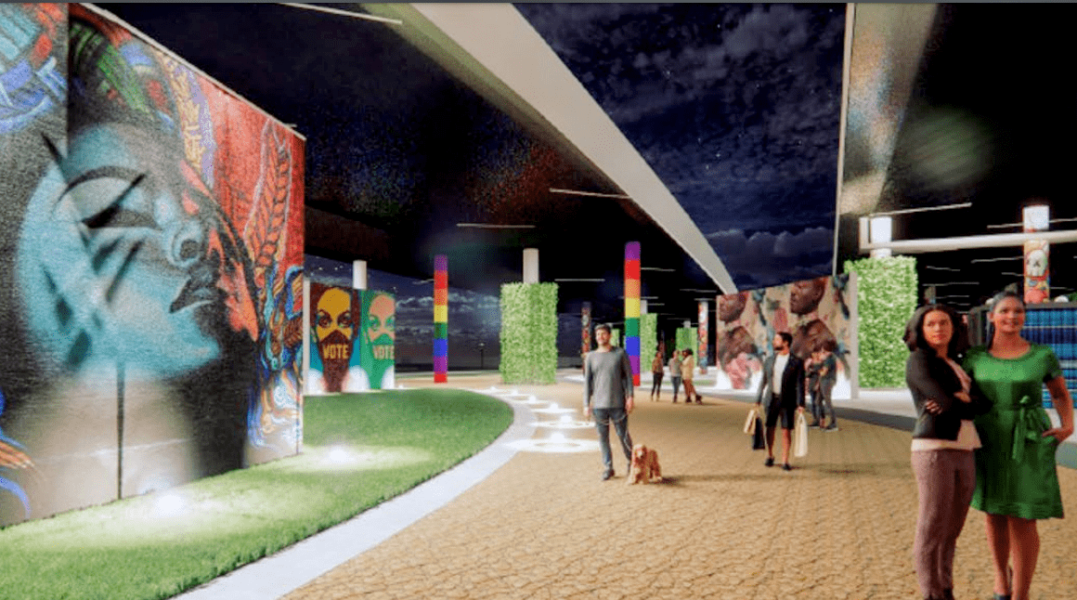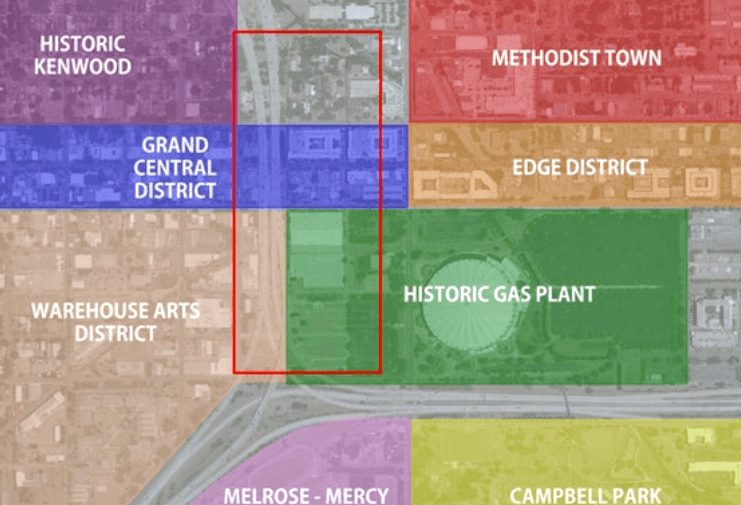Place
Plans to transform I-275 underpasses move forward

A local organization is taking a community-driven approach to transforming blighted areas underneath I-275 in St. Petersburg into vibrant park and event spaces that connect bifurcated neighborhoods.
Following the success of a similar initiative to create a park under a portion of I-375, city officials are now moving forward with the Trails Crossing concept. Evan Mory, transportation and parking director, and John Barkett, co-founder and president of nonprofit Friends of Trails Crossing Inc., explained the project’s benefits to St. Petersburg City Councilmembers during a Housing, Land Use and Transportation Committee meeting Thursday.
The discussion’s goal was to explain the concept, answer questions and receive feedback to create a master plan. Project officials will now submit a formal agreement to the city council for approval. All five council members in attendance offered their support during the meeting, and Chair Brandi Gabbard said she looked forward to moving the initiative forward.
“It just brings so much life and activity,” said Gabbard. “Just a really cool concept and something very sustainable. So, this hits all the high points for me.”

The I-275 underpass at 16th Street N is currently used for parking. Screengrab.
In addition to drastically improving underutilized areas under I-275, Mory said the project would increase access to the Pinellas Trail, create safer pedestrian crossings and provide much-needed space for city markets and art. Perhaps most importantly, he noted Trails Crossing would connect St. Petersburg neighborhoods divided by the interstate.
As it stands, Trails Crossing’s first phase would encompass four city blocks from 1st Avenue North to 3rd Avenue South. The Florida Department of Transportation (FDOT) owns the land and leases it to the city for parking.
Luckily for project stakeholders, said Mory, the FDOT built the interstate about 48 feet off the ground, with no berms or fill dirt. “And so, we have a great area to work with under there.”
Other similar, successful initiatives informed the concept, Mory explained, and officials refined those plans through community and FDOT conversations. He showed council members several pictures of underpass projects, like the Underline in Miami, which featured a preponderance of murals.
Trails Crossing would include walking and bike paths; a green ribbon, plaza and amphitheater; a “flex” plaza for pop-up markets; an expansive “Cross Road” plaza built with repurposed shipping containers; a children’s area, gardens and a dog park.
In addition to local markets, Trails Crossing would also provide art space for events like the SHINE Mural Festival.
“This project has really morphed from another pilot project some of us had all worked on before,” relayed Barkett. “In converting underutilized land under I-375 into a park. That’s been a huge success.”
Barkett, owner of Barkett Realty and managing partner for Apogee Real Estate Partners, added that city stakeholders are hosting a ribbon-cutting ceremony for that park Nov. 12.

Trails Crossing (seen in renderings) would utilize repurposed shipping containers and feature market space. Screengrab.
The Under-i project in Orlando required officials to elevate I-4, Barkett relayed. He said they are now creating programming for an almost identically sized cultural park underneath the interstate that connects to the Amway Center.
He said Trails Crossing would link six disjointed neighborhoods in St. Pete. That includes connecting areas like Melrose-Mercy to the south with the Grand Central District.
The first phase, relayed Barkett, will create a safe passage for pedestrians walking, biking and scootering into the Pinellas Trail, making it a focal point and asset “that it should be right now.”
Barkett noted nearly 2,000 recently completed, under construction or proposed housing units in the area, with no safe way to funnel people other than using a car. “It is a dynamite use of space for the city,” he said.

The project’s first phase would stretch from 1st Avenue North to 3rd Avenue South. Screengrab.
Trails Crossing, said Mory, would intertwine with the Grand Central master plan and redevelopment of the former Gas Plant District. Project officials are also working closely with community leaders and organizations.
Barkett noted that the project received formal support from surrounding organizations like the Warehouse Arts District Association, Creative Clay and the Tampa Bay Rays – who utilize some of the space for parking.
Mory said significant coordination among the many area initiatives is required, and officials must also find other areas to park city vehicles. He added that the administration recommends a 50-50 partnership on the project’s master plan, with the city and Friends of Trails Crossing each contributing $150,000.
Project officials will now execute an agreement with FDOT, finalize plans and present more details to the city council in a few months.








Olivier
October 28, 2022at5:04 pm
More comfortable shelter, for homeless to live in?
Mac Kellar
October 27, 2022at6:22 pm
Those in charge of planning will HOPEFULLY include plans for a PORTA-POTTY in each location.
Robert Gibson
October 27, 2022at6:13 pm
Great idea